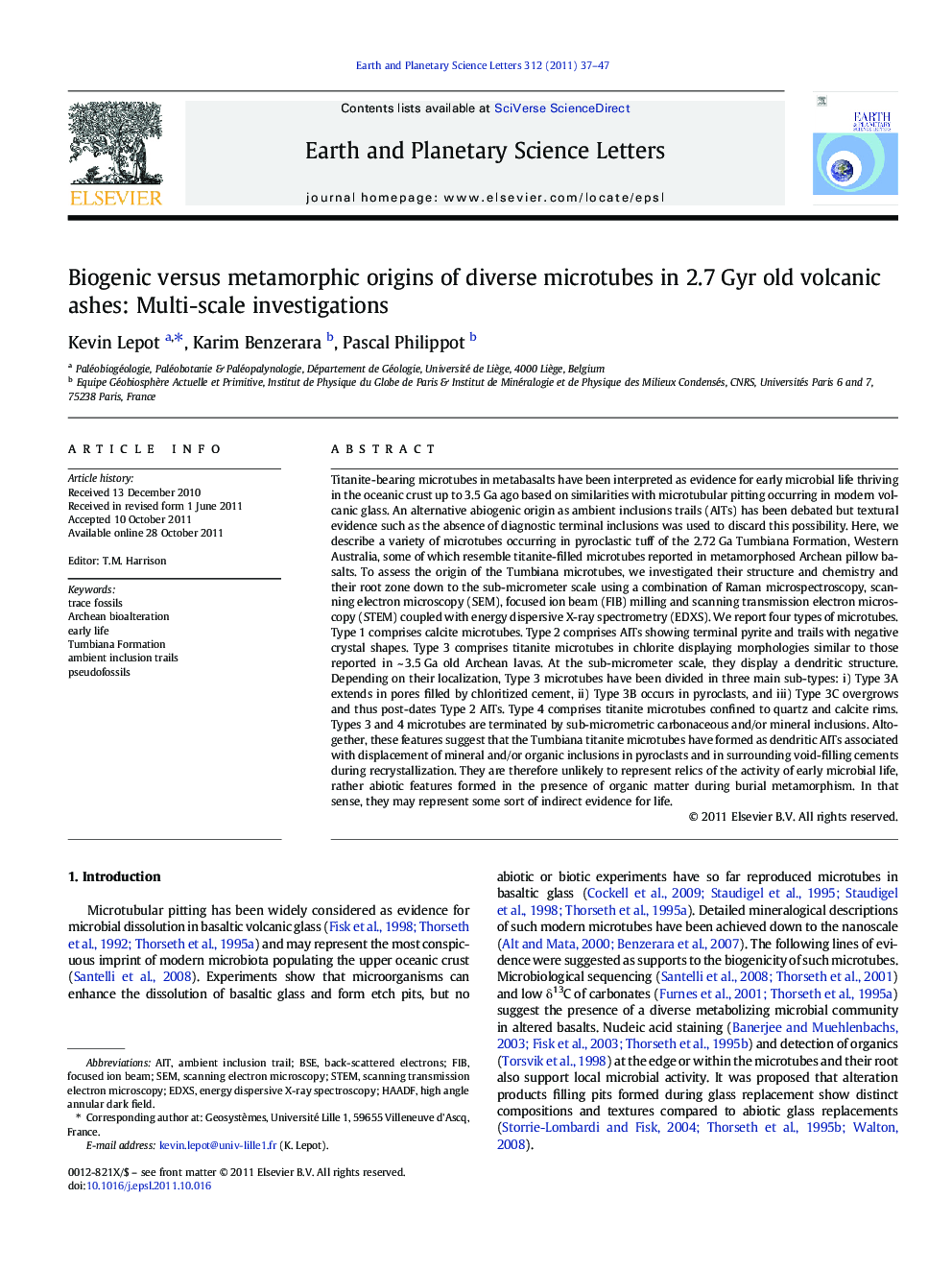| کد مقاله | کد نشریه | سال انتشار | مقاله انگلیسی | نسخه تمام متن |
|---|---|---|---|---|
| 4677774 | 1634816 | 2011 | 11 صفحه PDF | دانلود رایگان |

Titanite-bearing microtubes in metabasalts have been interpreted as evidence for early microbial life thriving in the oceanic crust up to 3.5 Ga ago based on similarities with microtubular pitting occurring in modern volcanic glass. An alternative abiogenic origin as ambient inclusions trails (AITs) has been debated but textural evidence such as the absence of diagnostic terminal inclusions was used to discard this possibility. Here, we describe a variety of microtubes occurring in pyroclastic tuff of the 2.72 Ga Tumbiana Formation, Western Australia, some of which resemble titanite-filled microtubes reported in metamorphosed Archean pillow basalts. To assess the origin of the Tumbiana microtubes, we investigated their structure and chemistry and their root zone down to the sub-micrometer scale using a combination of Raman microspectroscopy, scanning electron microscopy (SEM), focused ion beam (FIB) milling and scanning transmission electron microscopy (STEM) coupled with energy dispersive X-ray spectrometry (EDXS). We report four types of microtubes. Type 1 comprises calcite microtubes. Type 2 comprises AITs showing terminal pyrite and trails with negative crystal shapes. Type 3 comprises titanite microtubes in chlorite displaying morphologies similar to those reported in ~ 3.5 Ga old Archean lavas. At the sub-micrometer scale, they display a dendritic structure. Depending on their localization, Type 3 microtubes have been divided in three main sub-types: i) Type 3A extends in pores filled by chloritized cement, ii) Type 3B occurs in pyroclasts, and iii) Type 3C overgrows and thus post-dates Type 2 AITs. Type 4 comprises titanite microtubes confined to quartz and calcite rims. Types 3 and 4 microtubes are terminated by sub-micrometric carbonaceous and/or mineral inclusions. Altogether, these features suggest that the Tumbiana titanite microtubes have formed as dendritic AITs associated with displacement of mineral and/or organic inclusions in pyroclasts and in surrounding void-filling cements during recrystallization. They are therefore unlikely to represent relics of the activity of early microbial life, rather abiotic features formed in the presence of organic matter during burial metamorphism. In that sense, they may represent some sort of indirect evidence for life.
► Microtubes in Archean metabasalts were proposed as traces of early life.
► An unprecedented diversity of microtubes in 2.7 Ga old mafic tuffs.
► Titanite microtubes show dendritic structures and terminal carbonaceous particles.
► Larger microtubes with terminal pyrites are ambient inclusion trails.
► These argue for an abiotic, metamorphic origin of the microtubes.
Journal: Earth and Planetary Science Letters - Volume 312, Issues 1–2, 1 December 2011, Pages 37–47